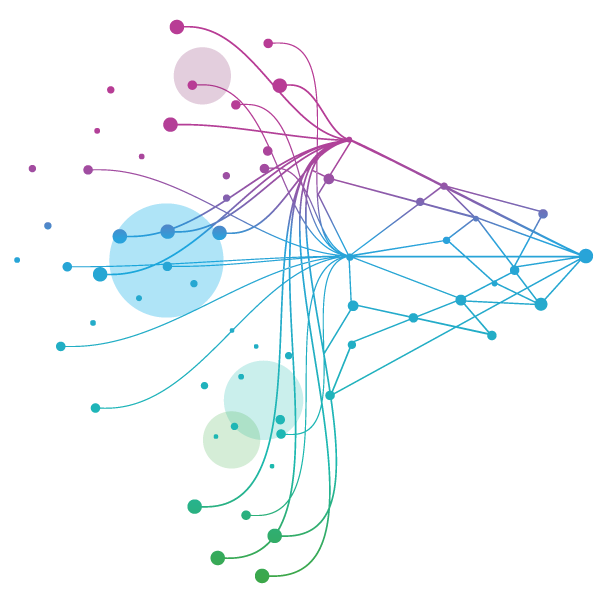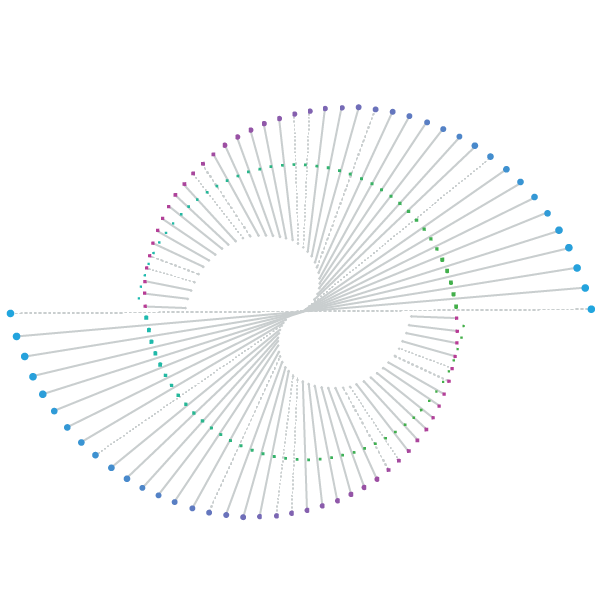Discover actionable brand insights at the intersection of market research and advanced analytics.






















- Blogs
- From Insight to Action: Translating Primary Research into Strategy for Rare Disease Programs
Rare diseases present a unique paradox: individually they affect small patient groups, but collectively they impact hundreds of millions of people worldwide. In fact, over 10,000 rare diseases have been identified [1], affecting roughly 3.5–5.9% of the global population (around 300–400 million people) – and many of these are pediatric cases.
Despite this scope, approximately more than 90% of rare diseases have no FDA-approved treatment, highlighting a vast unmet medical need. Pediatric rare diseases often surface early in life, with roughly half of all rare diseases first diagnosed in childhood [2]. For families and children navigating these conditions, the journey can be arduous – diagnosis may take years, specialists are few, and daily life can be a relentless struggle.
Understanding the Rare Disease Landscape
Rare diseases face distinct challenges that demand a nuanced approach. By definition, each rare disease affects only a small population, and these patients are often geographically dispersed, with few centers of expertise available to treat them.
This dispersion complicates everything from clinical research to patient support. There is also low awareness of many rare conditions among both the public and healthcare providers – only a limited number of clinicians have experience with a given rare disease. Families frequently struggle for years to get an accurate diagnosis and proper care, bouncing between specialists.
Another challenge is the high burden on patients and caregivers. Managing a rare disease can involve frequent travel to specialists, complex treatment regimens, and significant emotional and financial strain. For pediatric cases, parents or caregivers often shoulder enormous responsibilities, coordinating care and advocating for their child. This burden can be overwhelming: many families face physical, psychological, and social challenges in daily life.
Traditional clinical trials and care protocols can inadvertently add to this load if they are not designed with empathy for these realities.
The rare disease ecosystem is evolving rapidly. Favorable policies (such as orphan drug incentives and pediatric research grants) have encouraged pharmaceutical innovation in rare diseases. In the last few years, orphan drug approvals have risen, and many big pharma and biotech companies are investing in rare disease programs. This explosion of activity is positive, but it also creates information gaps and tough competition in both clinical development and commercial planning. Companies racing to develop new therapies need deep insights to make informed decisions – from understanding patient needs to positioning their product in the market. Crucially, a patient-centric approach across the drug lifecycle is now recognized as essential: pharma teams and regulators alike see the value in engaging patients, families, and advocacy groups to ensure their needs and voices drive development and access strategies.
These challenges underscore why a nuanced, insight-driven strategy is vital for rare disease programs. Pharma companies cannot rely on assumptions or one-size-fits-all approaches in this space – they need rich, firsthand understanding of the stakeholder experience to guide their decisions. This is where primary research comes in. By directly engaging with those at the heart of rare diseases – patients, caregivers, healthcare professionals, payers, and advocates – we can illuminate the path from insight to action.
Leveraging Primary Research for 360° Insights
Primary market research is the cornerstone of understanding rare disease stakeholders. At IQVIA, we leverage surveys, in-depth interviews, focus groups, and other primary research methods to capture perspectives from all key stakeholders in the rare disease ecosystem. Each group offers a unique lens on the disease, and together they form a 360° view that drives effective strategy.
Figure 1: Primary Market Research involves uncovering insights from all the stakeholders involved in a rare disease program
- Patients and Caregivers: In rare diseases, the patient voice is often intertwined with the caregiver’s voice, since parents or guardians speak on behalf of young children. Through patient and caregiver interviews and surveys, we hear the human story behind the disease. They share insights on daily challenges (e.g., managing symptoms, coordinating care, accessing specialists), emotional impacts, and what outcomes truly matter to them beyond clinical metrics. This helps identify unmet needs and priorities – for example, caregivers might highlight the desperate need for respite support or better information about the disease [3]. Capturing these personal insights ensures any strategy will genuinely address quality of life and practical support, not just clinical efficacy.
In addition to capturing the lived experiences of patients and caregivers, it is essential to assess the current standard of care (SOC) for each rare disease. This involves evaluating available therapies, their efficacy and safety profiles, and understanding whether these treatments are curative or primarily aimed at symptom management. Reimbursement for rare disease therapies can vary significantly across regions, impacting patient access and outcomes. Primary research can also help explore opportunities for drug repurposing, as leveraging existing therapies for multiple rare diseases can accelerate development and funding. By integrating these dimensions—SOC, reimbursement, efficacy, safety, and repurposing potential—into our research, we ensure that strategic recommendations are comprehensive and actionable.
- Healthcare Professionals (HCPs): Physicians, nurses, and specialists who treat rare disease patients provide a different perspective. Primary research with HCPs (through surveys or one-on-one interviews) can uncover diagnostic and treatment challenges. For instance, frontline pediatricians might report difficulty in recognizing rare conditions early, or specialists might identify gaps in current treatment protocols and referral pathways. HCPs can also speak to the effectiveness of existing therapies and where they see the greatest need for new treatments. Their insights help shape strategies around physician education, diagnostics, and clinical practice. Engaging HCPs is crucial – but it’s equally critical to not limit input to HCPs alone. Experience has shown that integrating the voices of patients, caregivers, and other stakeholders (not just doctors) is key to an inclusive and effective strategy [3].
- Payers and Market Access Stakeholders: Even the most effective therapy can fall short if it doesn’t reach patients, which is why payer perspectives are important. Through primary research with payers (e.g., pharmacy benefit managers, insurance medical directors, health economists), we gain insight into reimbursement barriers and evidence requirements. In rare diseases, therapies are often high-cost and data may be limited, so payers can illuminate what evidence they need to be convinced of a new treatment’s value [5]. They might point out, for example, that real-world outcomes or patient-reported quality of life improvements will be crucial to demonstrate, in addition to clinical trial results. Understanding these criteria early on allows pharma teams to plan evidence generation and HEOR (health economics and outcomes research) strategies that address payer concerns. In short, incorporating payer input up front helps avoid surprises at the market access stage.
- Advocacy Groups and Key Opinion Leaders: Often, we also engage with patient advocacy organizations or leading specialists/Key Opinion Leaders (KOLs) as part of primary research [4]. Advocacy groups, in particular, distill and amplify the collective voice of the patient community. They can provide access to patient registries and broader community feedback, and they offer critical insights grounded in lived experience [3] [6]. Advocacy organizations frequently advise on how to make clinical trials and programs more patient-centric – for example, suggesting protocol modifications to reduce patient burden, identifying meaningful endpoints (such as quality-of-life measures), and highlighting support services patients need [2]. Their close connection with families and clinicians allows them to highlight issues that individual interviews might miss, and they can later help amplify educational or awareness efforts. Including these insights ensures that our strategic recommendations are holistic and community-informed, not just based on one stakeholder’s viewpoint.
Using these diverse inputs, we build a comprehensive picture of the rare disease landscape. The goal is to map out the patient journey from early symptoms to diagnosis, treatment, and ongoing management, identifying pain points and opportunities at each stage. By integrating findings across patients, caregivers, HCPs, payers, and advocates, patterns emerge that might not be evident from one perspective alone. This multifaceted research approach is how we ensure no stone is left unturned. IQVIA’s Primary Market Research team specializes in exactly this kind of integrated research, capturing the full range of stakeholder insights to generate clear, actionable findings.
Integrating Clinical Insights with Market Research
Gathering stakeholder input is powerful on its own, but its impact multiplies when combined with clinical insights and data. Studies suggest that ~15-30% of trial failures in rare disease are related to issues with endpoints, including poor alignment with disease features, lack of adequate validation, and inadequate capture of important patient reported outcomes. At IQVIA, we bridge primary market research with clinical domain expertise to ensure that strategies are both patient-centered [7] and scientifically sound. Our approach brings together our Therapeutic and Medical experts (such as the Pediatric and Rare Disease Center of Excellence) with our Primary Market Research capabilities to jointly interpret findings. This collaborative interpretation is crucial in rare diseases, where deep medical understanding is needed to contextualize stakeholder feedback.
For example, suppose patients and caregivers in a survey express that a new therapy’s mode of administration is challenging (perhaps it’s an infusion requiring hospital visits). Our medical experts can evaluate if alternative delivery forms (like an injection or oral formulation) might be feasible down the line, or if home infusion services could mitigate the burden. Similarly, if physicians highlight uncertainty about the long-term outcomes of a treatment, we can review clinical trial data or real-world evidence to see what is known and what further data could be gathered. By combining clinical data with stakeholder insights, we get a full 360° view – qualitative feelings and quantitative facts.
This integration might involve analyzing clinical trial results, real-world data, or epidemiological information alongside the primary research. For instance, IQVIA’s vast real-world data assets (such as patient registries and electronic health record databases) can complement interview findings by providing hard evidence on disease prevalence, treatment patterns, or outcomes in the real world. If caregivers say that “many patients discontinue therapy after six months due to side effects,” we could check real-world data to quantify dropout rates and reasons. If payers voice a need for evidence of long-term survival benefit, we might model projections using available data. In this way, voice of the patient is cross-validated and enriched by the voice of data.
Stakeholder feedback often highlights the complexities of clinical trial design in rare diseases, particularly around the selection of appropriate endpoints. Studies may struggle or fail if endpoints do not reflect outcomes that are meaningful to patients or are challenging to measure consistently. For example, assessments like the 6-minute walk test (6MWT), commonly used in rare neuromuscular disease trials, can present difficulties in achieving consistency across sites and patient populations. Incorporating insights from patients, caregivers, and clinicians helps ensure that endpoints are both clinically relevant and feasible (both valid and tractable), ultimately improving the quality and impact of research.
Importantly, integrating clinical perspectives helps in translating insights into feasible strategies. Our medical and scientific teams ensure that any recommended action (be it a new trial design, an expanded patient support program, or a novel endpoint to measure) is grounded in medical reality. They help answer questions like: Is this biologically plausible? Is there regulatory precedent for this approach? What are the risks? This rigor means that our strategic recommendations are not only insightful but also practical and achievable.
As technology and access to advanced diagnostics continue to evolve, so too do the endpoints and biomarkers used in rare disease research. This ongoing evolution requires that our strategies remain flexible and adaptive, ensuring that assessments and measures are aligned with the latest scientific and technological advancements. By maintaining a dynamic approach, we can better capture meaningful outcomes and drive innovation in rare disease programs.
In summary, the fusion of primary research and clinical insight is a key differentiator of IQVIA’s approach. By combining inputs from medical experts with primary market research findings, we deliver strategies that reflect both the hearts and minds of the rare disease community and the scientific evidence at hand. This integrated analysis sets the stage for moving from insight to action.
Developing an Actionable Strategy
Collecting insights is only the first step – the true value comes from translating those insights into a clear plan of action. After gathering and synthesizing the rich input from patients, caregivers, HCPs, payers, and other contributors, our focus turns to formulating strategy. The process can be thought of in a few key phases, each informed by the previous steps:
Figure 2: Key steps involved in the development of an actional strategy
- Identifying Key Findings and Unmet Needs: We distill the research into a set of key insights. These might include, for example, “Patients struggle with traveling long distances for care,” or “Many physicians lack awareness of early symptoms,” or “Payers are concerned about the high upfront cost given limited long-term data.” Each insight points to an unmet need or a barrier in the current state. By clearly articulating these, we set the objectives that the strategy must address. (For instance, reducing the travel burden, increasing physician awareness, strengthening evidence of long-term value, etc.)
- Strategic Brainstorming and Solution Design: For each key insight, we explore potential solutions. At this stage, it’s critical to bring together cross-functional expertise – medical, commercial, operational, etc. Using the examples above, to reduce the burden of patient travel, one solution could be implementing decentralized clinical trials or home nursing support so that families don’t always need to visit distant hospitals.
- To increase physician awareness, a strategy might be to launch targeted medical education programs or develop diagnostic toolkits for pediatricians in community settings
- To address payer concerns on evidence, the strategy could include designing a robust real-world evidence plan or health economics model that demonstrates the therapy’s value over time
- At this stage we generate a range of strategic initiatives and refine them based on feasibility, impact, and alignment with the client’s goals
- Prioritization and Roadmap Development: We can’t do everything at once. So, we prioritize actions that will have the greatest impact and are achievable with available resources and timeframes. For example, if a drug launch is imminent, improving physician awareness and finalizing a reimbursement dossier might take priority, while longer-term plans for patient community building might be scheduled for post-launch. We develop a roadmap or action plan that sequences these initiatives. Each action is tied back to the original insight, so we maintain a clear “line of sight” from the stakeholder need to the company’s response.
- Implementation and Follow-Up: Strategy doesn’t stop at the plan – we often stay engaged to help implement or to measure outcomes. This could involve working with the client’s teams to set up new programs (like a caregiver support hotline or a centers-of-excellence network for rare disease referrals) and defining KPIs to track success. As data comes in from these initiatives, we close the feedback loop: are patients reporting better experiences? Did diagnosis rates improve? Strategy is iterative, and we adjust tactics as needed, always driven by the insights from our stakeholders.
Throughout this process, our multifaceted research ensures that the patient remains at the center of strategy- this means the final strategic plan explicitly addresses the needs of patients and their families at each step. The outcomes might include a mix of clinical and commercial tactics – essentially, a blueprint for the rare disease program’s success.
Crucially, these strategies are not developed in isolation. Pharma clients often have multiple teams (clinical development, medical affairs, commercial, market access) – a truly effective rare disease program strategy will align all these functions around the insights. For example, the clinical team might implement the decentralized trial elements, medical affairs might lead the HCP education initiatives, and commercial/market access teams might handle the support programs and payer strategy. Because all these tactics spring from a common set of validated insights, they reinforce each other and drive toward the same goal. This alignment, fueled by a deep understanding of stakeholder needs, is what accelerates a program from an idea to a real-world success.
Delivering Holistic Strategies for Rare Disease Success
Translating primary research into strategy is both an art and a science, and it’s transformative for pediatric rare disease programs. By systematically listening to patients, caregivers, healthcare providers, payers, and advocates, we ensure that no critical insight is missed. We then combine those human insights with clinical and data-driven evidence to craft strategies that are compassionate, informed, and effective. The outcome is a tailored roadmap that can dramatically improve how a new therapy is developed, delivered, and received in the real world.
At IQVIA, we have long-standing expertise in the rare disease space, with dedicated teams and Centers of Excellence that span clinical research, data analytics, and primary intelligence.
Our philosophy is to incorporate all stakeholder inputs and bring a holistic view to our clients’ toughest challenges. By partnering with healthcare professionals, patients and families, advocacy groups, and payers, we ensure our clients see the full picture and can confidently move from insight to action. In fact, our rare disease experts often work hand-in-hand across disciplines – from regulatory strategy in early stages to market access strategy at launch – providing end-to-end support in designing and executing rare disease programs. This combination of unparalleled primary market research alongside deep scientific and medical expertise is what differentiates our offerings.
In closing, from insight to action is more than a tagline – it’s a necessary journey in rare diseases. By leveraging primary research to inform strategy, we turn the wisdom of patients, caregivers, and providers into tangible plans that drive results. In doing so, we help our clients not only achieve their business objectives but also make a meaningful difference in the lives of children with rare diseases and their families. This is the power of listening to the stakeholders that matter most, and it’s at the heart of how IQVIA approaches pediatric rare disease programs – ensuring that every insight lights the way to a smarter strategy and a brighter future for patients.
References:
1. Genetic and Rare Diseases Information Center | GARD. Accessed Oct 2025. Available from: https://rarediseases.info.nih.gov/
2. How rare diseases add up, making them a high public health priority. Accessed Sept 2025. Available from: https://www.iqvia.com/blogs/2023/09/how-rare-diseases-add-up-making-them-a-high-public-health-priority
3. The Global Role of Patients, Advocates and Caregivers in Rare Diseases. Accessed June 2024. Available from: https://www.ncbi.nlm.nih.gov/pmc/articles/PMC8131174/
4. Unlocking clinical and commercial success: How PAGs power rare disease research? Accessed Sept 2025. Available from: https://www.iqvia.com/blogs/2024/08/unlocking-clinical-and-commercial-success
5. Carer burden in rare inherited diseases: a literature review and conceptual model. Accessed Sept 2025. Available from: https://ojrd.biomedcentral.com/articles/10.1186/s13023-022-02561-w
6. The involvement of rare disease patient organizations in therapeutic innovation across rare pediatric neurological conditions: a narrative review. Accessed Sept 2024. Available from: https://ojrd.biomedcentral.com/articles/10.1186/s13023-022-02317-6
7. Patient-centric Care in Rare Diseases. Accessed Sept 2025. Available from: https://www.iqvia.com/blogs/2017/02/patientcentric-care-in-rare-diseases
Related solutions
IQVIA Social Media Intelligence utilizes a blend of an AI-based patient intelligence platform and human ingenuity to conduct in-depth social listening and social media monitoring for the life sciences industry.
Build on our experience of more than 245 rare disease studies in 96 countries to fulfill your promise of hope to millions around the world.







